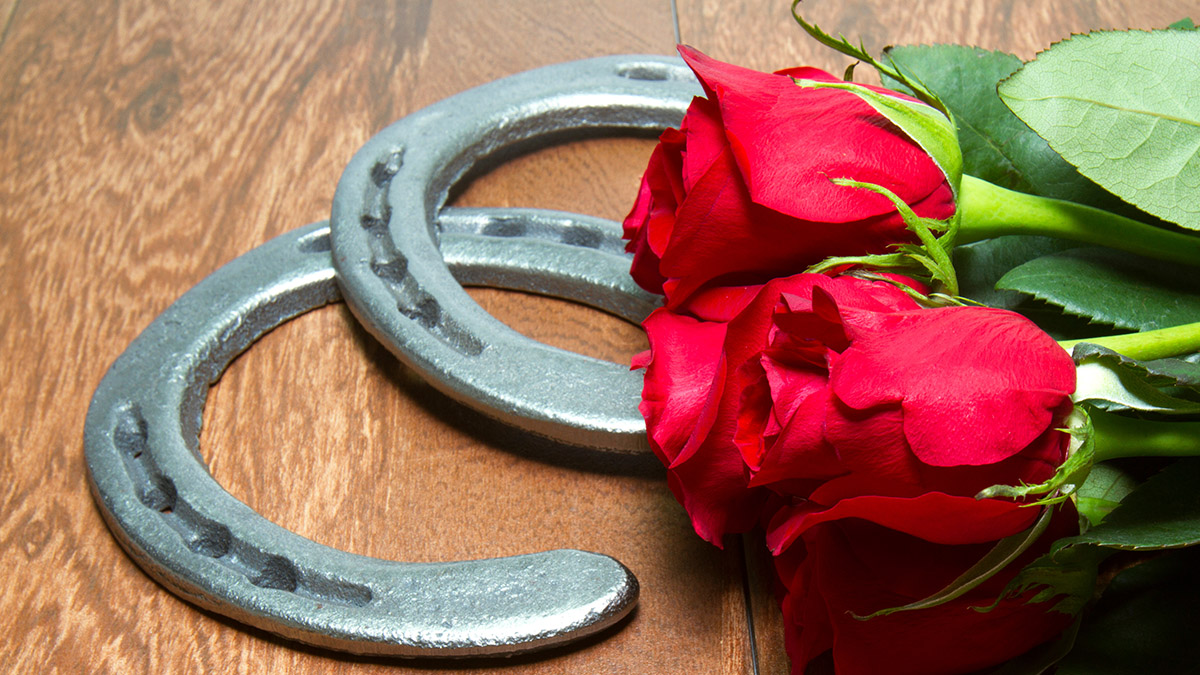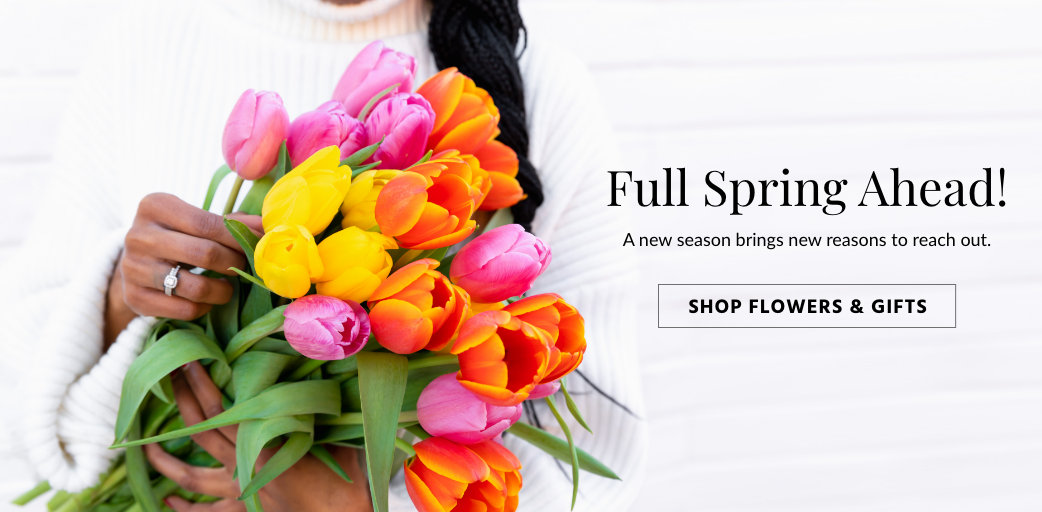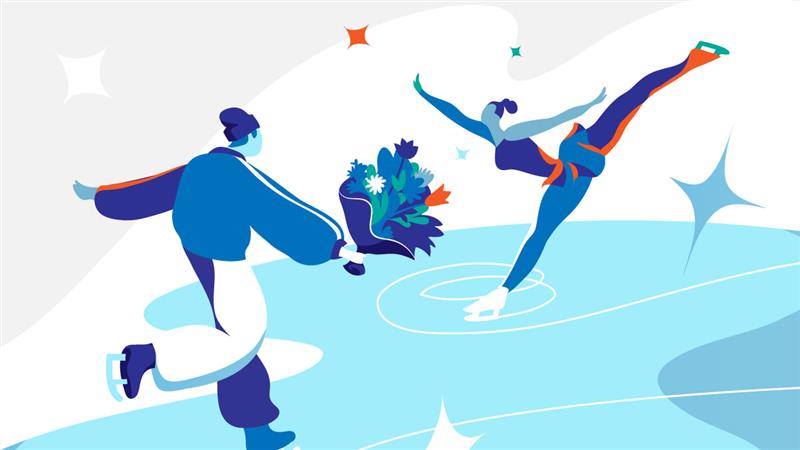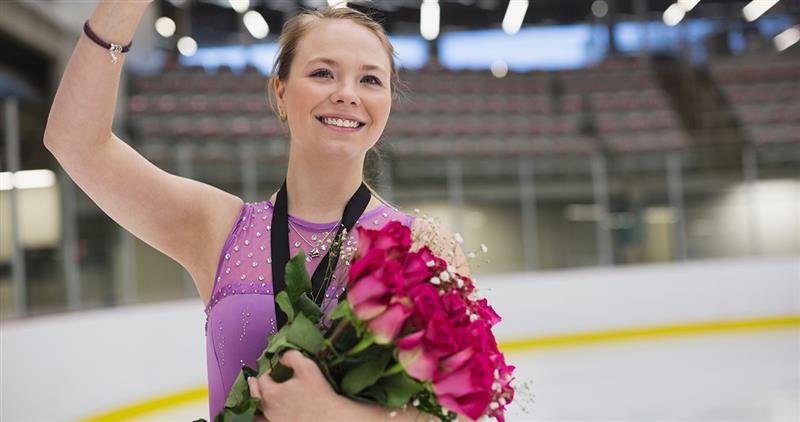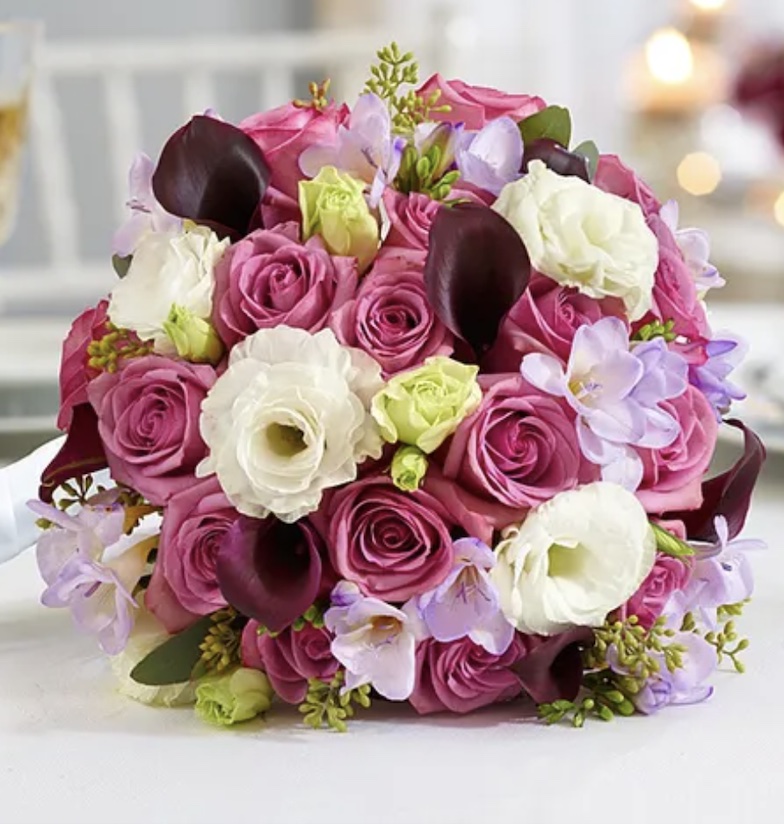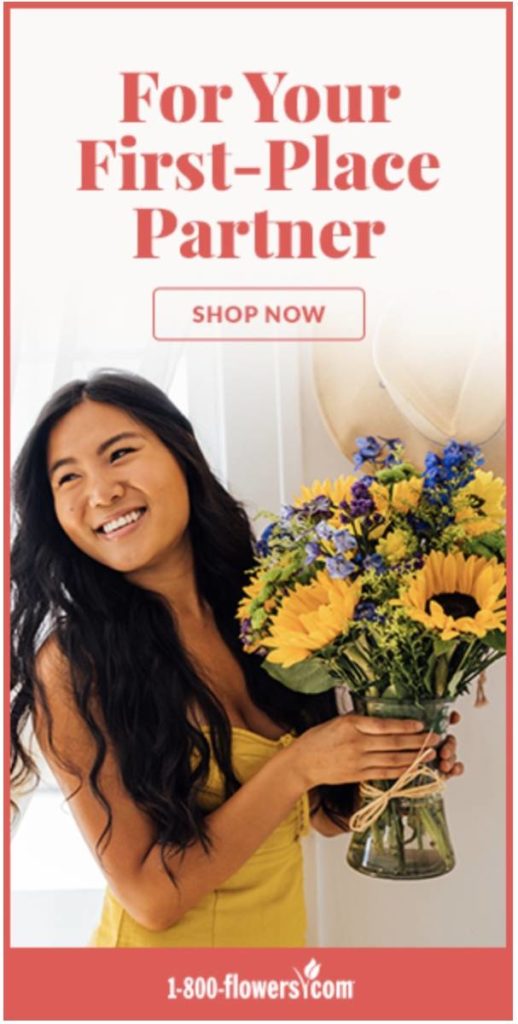From tulips to chrysanthemums, our series “The Language of Flowers” explores everything from fresh flower care tips to flower symbolism and meaning. The history of horse racing and flowers is centuries old. Learn more about the connection between the flowers and the sport of kings.
With its garlands of victory, colorfully landscaped racetracks, and bloom-bedecked patrons, the “sport of kings” might just as aptly be called the “sport of flowers.”
Horse racing dates to around 700 BC and the Olympic Games in ancient Greece, which included four-horse and two-horse chariot races as well as horse-and-rider contests. And, since the Greeks awarded laurel wreaths to winners, flowers played a role in the sport.
The connection blossomed at England’s Ascot Racecourse, founded by Queen Anne in 1711. The glamorous, star-studded venue is as famous for its floral decorations, huge displays, and flowered hats as it is for its steeplechase.
The first races in the new world were often rough-and-tumble affairs, with riders grappling to unseat one another as their horses galloped over rugged terrain. By the 1730s, though, the sport began to take on a more respectable nature with the establishment of the first jockey club in America, in Charleston, South Carolina. Soon, members of the wealthy class were bringing thoroughbreds over from England to run and breed them, and American horse racing as we know it was born.
The Run for the Roses
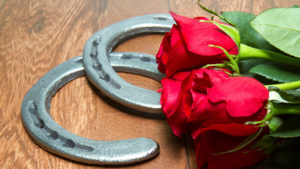
Louisville, Kentucky’s Churchill Downs opened for business in 1875 with three stakes races: the Kentucky Derby, Kentucky Oaks, and Clark Handicap, all of which are still held today. In 1884, track founder Meriwether Lewis Clark began presenting winning jockeys with rose bouquets; by 1904, red roses were the official flowers of the Kentucky Derby. Over the years, sportswriters dubbed the race “The Run for the Roses.”
The tradition of draping a lush blanket of red roses across the withers of the winning horse began in 1932, when Burgoo King received the honor. Today, designers sew the blanket the day before the event, using more than 400 roses as well as rich, green ivy for the border. The finished product, which takes 10 to 12 hours to create, measures 22-by-122 inches and weighs about 40 pounds.
Crowning glories
The garland of roses is far from the only flower tradition at Churchill Downs. Since 1991, winners of the Kentucky Oaks, the Derby’s sister race for fillies, are bestowed a blanket of stargazer lilies, leading to the nickname “Lilies for the Fillies.”
The track maintains a greenhouse, where horticulturists grow dozens of varieties of annuals — from gold Miss Huff Lantana to pink petunias and angelonia — for ornamental boxes and plantings across the track’s 164-acre grounds. Red geraniums decorate the winner’s circle, forming a horseshoe around the presentation stand.
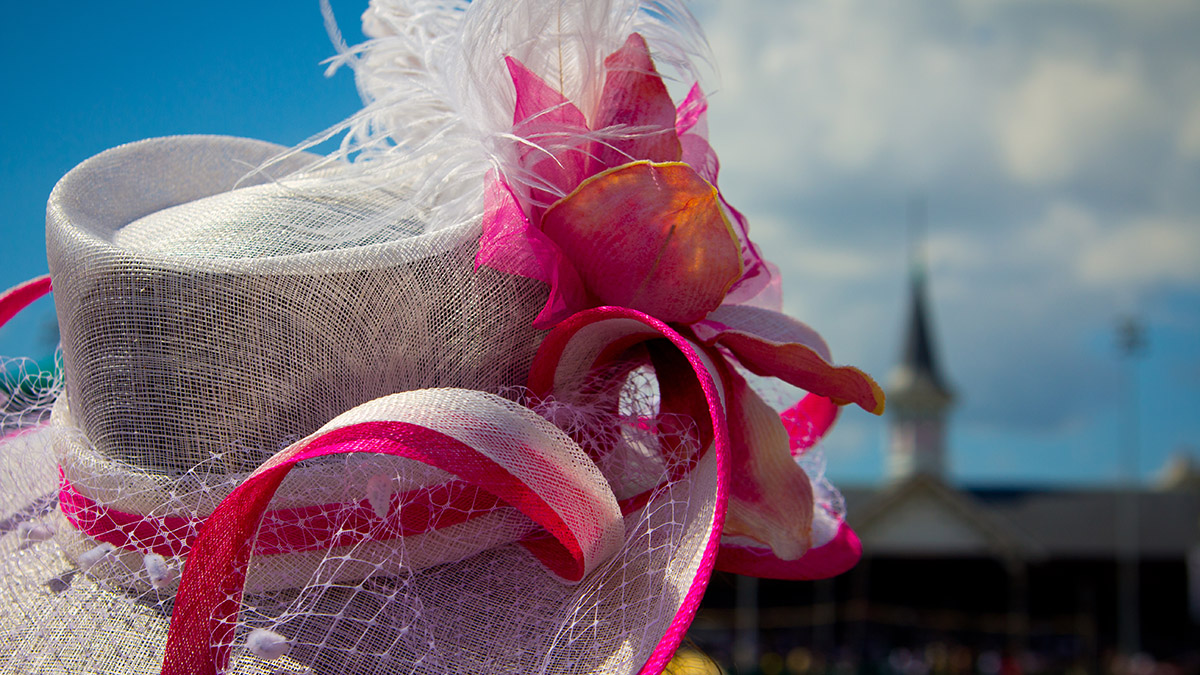
Starting in the 1960s, the up to 60,000 reserved seats for Derby weekend became a sea of hats and fascinators, many trimmed with elaborate floral displays and costing hundreds, or even thousands, of dollars. But with a little ingenuity, a basic wide-brimmed straw model, and your favorite flowers and some fabric (tulle works well), you can DIY. Mix the mint juleps, place your bets, and you have yourself a party.
Mum’s the word at Pimlico
Two weeks after the Derby, the racing world moves to Pimlico in Baltimore, Maryland, for the Preakness Stakes, the second leg of the Triple Crown. Black-Eyed Susans have reigned as the state’s official flower since 1918, but because they bloom from June to August, Viking mums — a variety of chrysanthemums that resemble the summer perennials — comprise the winners’ blankets for both the Preakness and Black-Eyed Susan Stakes, a race for the nation’s top fillies.
A variety of mums also bloom throughout the grounds, even spelling out “Pimlico” in red and yellow alongside the track’s middle section.
Love and luck at Belmont
Not to be outdone is the Belmont Stakes, the third leg of the Triple Crown held at Belmont Park in Long Island, New York. The winner of that race receives a blanket of 400 to 700 white carnations, shipped in from either California or Colombia. Like the rose blanket, it takes about 10 hours to create and weighs in at 40 pounds.
Carnations have no special identification with New York, where the state flower is the rose. But they do signify love and luck, something colts need over the mile-and-a-half Belmont, the longest of the Triple Crown races.
Each year, to coincide with the running of the Belmont, florists for the New York Racing Association create a second blanket of carnations to drape over a statue of the great Secretariat, the 1973 Triple Crown winner and owner of the track and world record for 1 1/2 miles on turf.
Win, place, or show
The connection between flowers and horse racing extends far beyond the three Triple Crown racetracks. Varieties lend their names to races like the Orchid Stakes, held annually for fillies and mares at Gulfstream Park in Florida, and the Apple Blossom Handicap in Hot Springs, Arkansas. And racehorses, particularly fillies, are sometimes named for flowers, with Dahlia, Bed O’ Roses, and Lady Aurelia being among the most prominent (to say nothing of Bowl of Flowers).
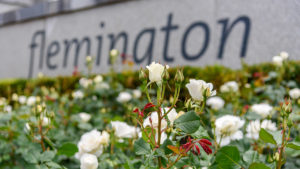
When it comes to blooms, no track outdoes Saratoga Race Course, founded in 1863 in Saratoga Springs, New York. Winners of its most prestigious race, the Travers Stakes, receive blankets of carnations in the track’s colors: red, with white for the border. An expansive bed of red and white carnations surrounds the fountain at the track’s entrance.
Beginning in 2013, the Whitney Stakes, held at Saratoga each August, presents a blanket of pink roses to its winners. Flowering annuals — geraniums, impatiens, petunias, begonias — adorn the paddock area and hanging baskets in the horse barns. Opening day at Saratoga features flower-festooned headdresses that would give those at the Derby a run for their money.
Beyond just the four covered here, many other venues in the U.S., and around the world, prominently feature flowers. In fact, from the daffodils blooming at the jockey park at New Jersey’s Monmouth Park Racetrack to the array of colorful perennials adorning the entrance of California’s Del Mar Racetrack to the massive rose garden at Flemington Racecourse in Melbourne — the largest public rose garden in the Southern Hemisphere — it’s a good bet that nearly any racetrack you visit has its own connection, large or small, to flowers.
